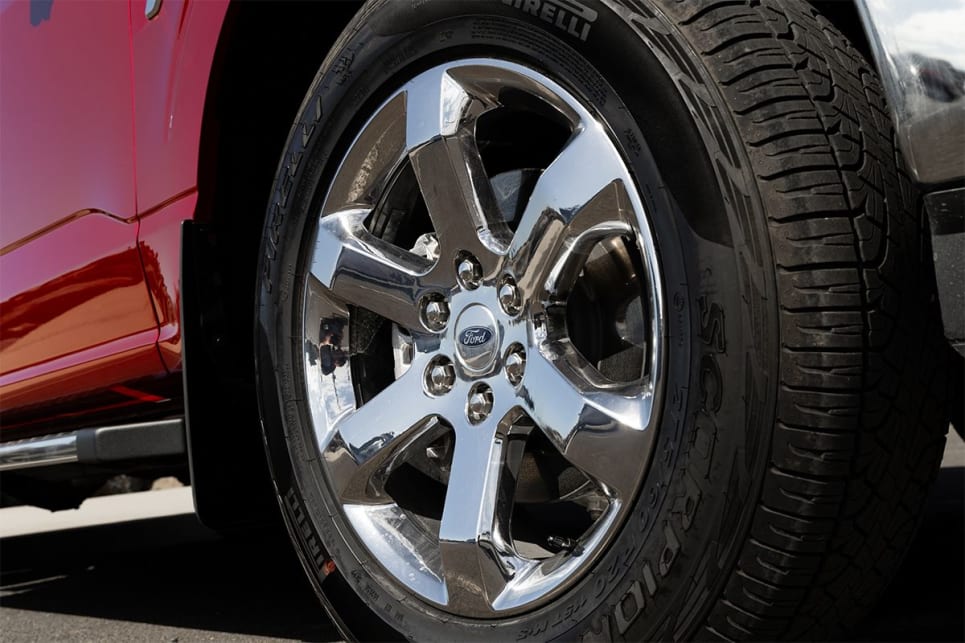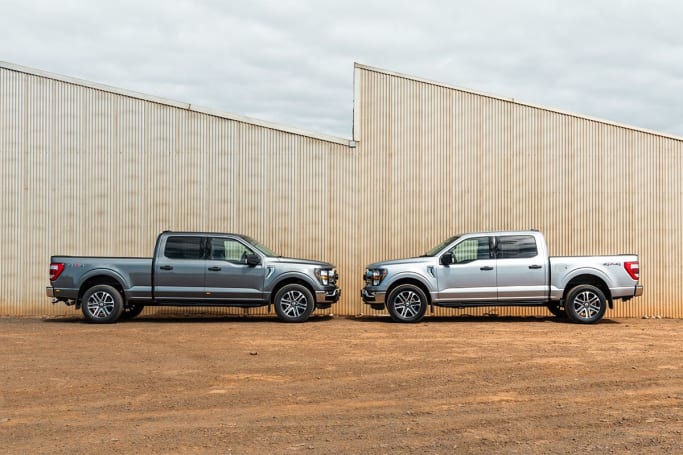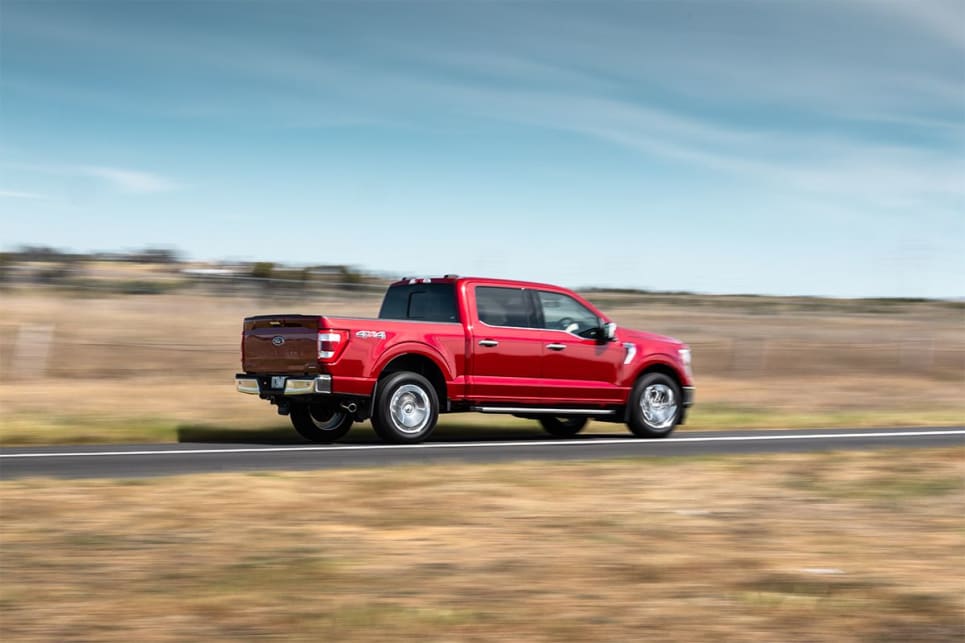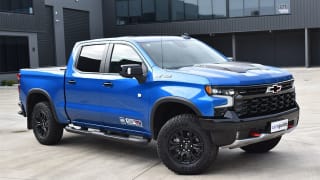Ford Australia has taken only the F-150 this time around, but will make it available in two trim levels and with two tray lengths.
Things kick off with the entry level XLT which gets a column-shifter for the transmission, halogen headlights, black trim pieces and 20-inch alloy wheels.
By comparison, the Lariat is a bit ritzier with a console-mounted shifter, more brightwork including chrome wheels, daytime running lights and LED headlights.
Inside, the Lariat gains a few comforts including heated and ventilated front seats (heated only on the XLT) leather accented upholstery, a memory driver’s seat, rear centre armrest, a powered rear window and a sunroof.
Both variants get adjustable pedals, but the Lariat extends that to a memory function. The latter also gains automatic wipers and keyless start over the XLT, as well as a 12-volt socket in the tray, leather wrapped steering wheel, and a 12-inch colour screen (8.0-inch for the XLT).
Pricing starts at $106,950 for the base-model XLT in short-wheelbase form, with the longer wheelbase adding $995 to take the sticker to $107,945.
The same premium applies to the XLT, which starts at $139,950 and moves to $140,945 with the longer tray.
Ford Australia has been careful to specify the F-150 in a way that helps justify the asking price, as well as reflect the projected usage by Aussie owners.
To do that – even though the cars are remanufactured when they reach Melbourne – they’re built in Dearborn to a specific Australian specification.
The other part of that is to ensure that what are options on US-spec models are standard fitments here. As Ford put it at the recent local launch: “These are Australian-spec trucks as they leave the line… they’re just not right-hand drive yet”.
That policy starts with the inclusion of Ford’s 'Tow Max' package including the reversing assistance yaw-control module and a chassis made from thicker-gauge steel, the powered tailgate on the Lariat model and the 136-litre long-range fuel tank.









































